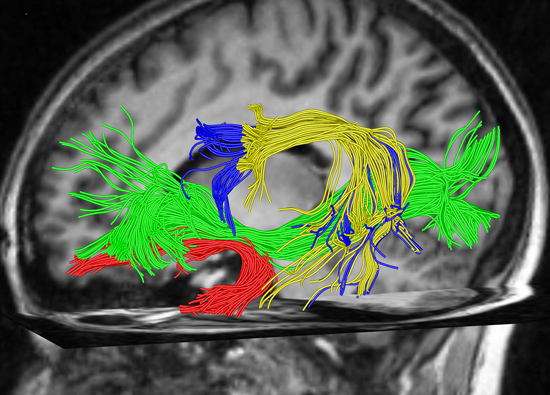Introduction
A brief sketch of language comprehension
Language comprehension is an integral part our daily life. When hearing or reading a sentence we have to decode who is doing what to whom in order to understand the meaning it conveys.
The underlying processes are assumed to take place in three steps. In a first step the processing system builds a local phrase structure on the basis of word category information (e.g. noun, verb etc.). In a second step syntactic and semantic relations between words and phrases have to be computed, in order to determine a sentence’s meaning. In a third processing step integration of syntactic and semantic information takes place. When both types of information easily map comprehension is achieved. When syntactic information and semantic information do not easily map (e.g. ambiguous sentences) the processing system might be forced to reconsider its initial analysis. All these processes mainly involve different regions in the left hemisphere.
When processing spoken language prosodic information has to be considered as well. Prosodic information is relevant as it can indicate whether an utterance is a declarative (He went home!) or a question (He went home?). This information is mainly processed by the right hemisphere.
Both hemispheres interact to guarantee a smooth comprehension of spoken language.
For a more complete description and a full reference list consult Friederici, 2011 (Physiological Reviews, 91(4), 1357-1392).

Figure 1: Fiber bundles
The different brain regions are connected by different fiber bundles which are color coded (see Figure 1). The language-relevant brain regions, their functions and their interconnectivities are described in the following.